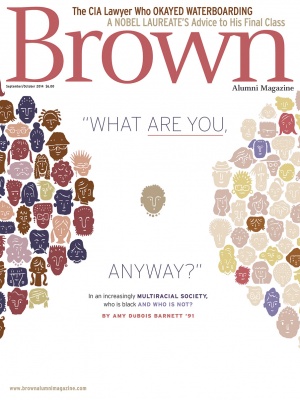As a self-appointed spokesman for autism, Raun Kaufman ’95 does not have the luxury to avoid commenting on vaccines and autism, and it is irresponsible of him not to do so. (“The Way Out,” Arts & Culture, July/August). Scientifically, there is no debate on this topic: vaccines, in particular the Measles Mumps Rubella vaccine (MMR), do not cause autism. The incorrect assertion that they do originated with Andrew Wakefield’s fraudulent 1998 article in the British medical journal The Lancet, now fully retracted by that publication.
Large epidemiological studies since then have failed to demonstrate any link between vaccines and autism. What is scientifically irrefutable is that vaccines prevent thousands of cases of serious illness, birth defects, and death every year. As more parents choose not to vaccinate their children, we see resurgences in such preventable diseases as measles and whooping cough, as well as in the consequences of these infections, but no decrease in the autism rate. Since Kaufman has thrust himself and his autism into the public eye, he is in a unique position to clarify that vaccines do not cause autism but do save lives.
Jane Kaufman ’94
New York City
I would like to present a humanistic side of behavior modification as treatment for autism that contrasts with Raun Kaufman’s robotic “broccoli” perspective. In the Young Autism Project, a cross-campus program involving UCLA, UC Santa Barbara, and Claremont McKenna College, I was the senior student therapist at Claremont for four years under the direction of Dr. Laura Schreibman. Partnering with parents, we taught mute and echolalic children as young as two how to talk, how to think, how to interact, how to use the potty, and everything in between.
To reward learning we spun coins and dreidels, tickled and bounced, and taught language acquisition with a child’s affect and inflection. The results of the multiyear, tricampus project, now replicated at other centers across the United States, were that 47 percent of children in treatment were able to start regular school programs with their peers, and had post-treatment I.Q. scores within normal ranges.
My write-up of a year of our work with 3-year-old Linda (a pseudonym) is described in the case study chapter of Dr. Ivar Lovaas’s book, The Autistic Child-Language Development Through Behavior Modification. In the hands of reputable practitioners, these research-based approaches have creatively and compassionately helped hundreds of children with autism to gain independence and dignity. That’s not broccoli!
Dean Alexander ’70
Wrightwood, Calif.
This is a remarkable story, not only for parents of autistic children, but for parents and educators of children and students of all ages. As an educator, I cling to Kaufman’s adage that “the child shows the adult the way in, and the adult shows the child the way out.” Brilliant.
M.B. McLatchey ’83 MAT
Comment from brownalumnimagazine.com




